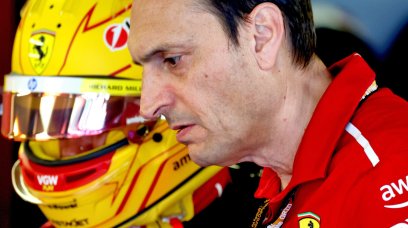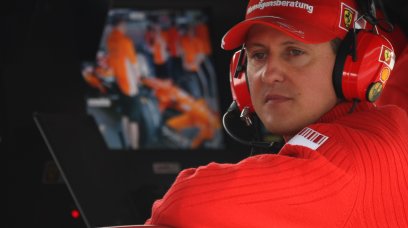It is well known that around 80 percent of the aerodynamic performance of a ground-effect F1 car is attributed to the floor. A floor's effectiveness undoubtedly constitutes the biggest competitive advantage on which the performance of each single-seater is based. In essence, the dynamics of the car both contribute to and benefit from the generation of downforce produced by the underbody and how this reacts in terms of triggering porpoising.
The aerodynamic volumes of the current technical regulation are particularly prescriptive, but the conformation of the Venturi channels on the floor benefits from wide conceptual freedom, since, with the same volumes, it is possible to vary the sections to obtain the desired pressures and underlying flow velocity. We could almost compare the floor of an F1 car to the canvas of a painting, in as much as its dimensions are clearly limited, but within which the artist [each team's aerodynamicists], can express their talent rather freely, even finding considerably different paths from one another. In Monaco first and later in Spain, it was possible to grasp the details of the floors of Red Bull, Mercedes and Ferrari respectively. The images of the crashed cars lifted by cranes to be removed aroused the curiosity of paddock insiders, as these are areas of the cars that are particularly strategic in terms of design and not usually visible.
With the secrets of the RB19, W14 and SF-23 unveiled, it is possible to make an interesting comparison to highlight the differences and similarities between the three concepts. At first sight, it is immediately visible how the lateral peripheral section [the side edge], despite including elements that are visually different from each other in terms of slits and lower diverting profiles, tends fundamentally and progressively to become uniform. Undoubtedly, there is greater consistency between Mercedes and Ferrari compared to Red Bull, above all for the radical difference in profile of the front air conveyors - with a decidedly arched profile - to those of the RB19. The latest evolution of the floor of the W14, in terms of Venturi channels, has seen an increase in their complexity and in their central section, even splitting into a central and external portion.
On the SF-23, the profile of the channels remained single and decidedly more continuous, without interruptions, up to the level of the throat of the diffuser. Nonetheless, the two floors in the central section still remain similar in terms of concept, in relation to the constant depth of the channels. We mean that in both floors, there are no sudden changes that suddenly increase the depth of the channels, thus maintaining its linear variation according to the main profile of the channel. In essence, we mean that, although the cross sections of the channels differ greatly between the W14 and the SF-23, their vertical development is instead consistent with a single wing profile, without interruptions. This represents the major difference between these two cars and the RB19. Basically, the bottom of the Red Bull not only has variations in the cross-section of the channels, with narrowings that create grooves and expansion sections, which determine predictable variations in pressure and speed of the underlying flow as a desired consequence, but it also contains evident interruptions in the longitudinal profile of the canals. In practice, we could define these interruptions as almost dips in which the flow tends to detach itself for a very short distance, to then resume its laminar trend adhering to the lower profile of the bottom.
On the RB19 there are at least two interruptions: One before the central section of the back [the one closest to the ground] and one in front of the elbow of the speaker. These interruptions do not have the function of increasing downforce; they cause an increase in pressure in that specific area, reducing the speed of the airflow, but they have the precious function of deactivating porpoising as the floor approaches the ground. So they prevent the triggering of jolts, generated by the reduction in ride height and the resulting increase in downforce. In a nutshell, it could be said that by sacrificing a small part of the load potentially generated by the floor almost in contact with the ground, the objective of travelling with minimum ride heights can be achieved without suffering the triggering of jolts. As mentioned, these variations in the depth of the channels are repeated at the rear precisely to manage the same phenomenon linked to the lowering of the rear axle when accelerating, and consistently at full speed between the front and rear axles. It seems quite evident that one of the secrets available to the RB19 is on the floor. That said, even the perfect replica of this solution is certainly not capable of bringing the same benefits to another car. The mix, in fact, consists of careful management of the variations of ride heights and dynamic response of the suspensions. The floor of the RB19, therefore, reaches its maximum efficiency thanks to the perfect integration with the work of the suspension, which reduces or even cancels the longitudinal oscillations.
The three floors compared
The SF-23 floor and W14's have points in common, especially at the level of the arched profile of the lower flow diverters. Another point in common is the continuity of the profile of the channels in terms of their vertical section [depth]. The Venturi channels of the RB19, on the other hand, have interruptions in their profile, with clear jolts that determine areas of high pressure, where the speed of the flow is reduced, with the function of damping or cancelling the triggering of aerodynamic jolts [porpoising].
Most read







